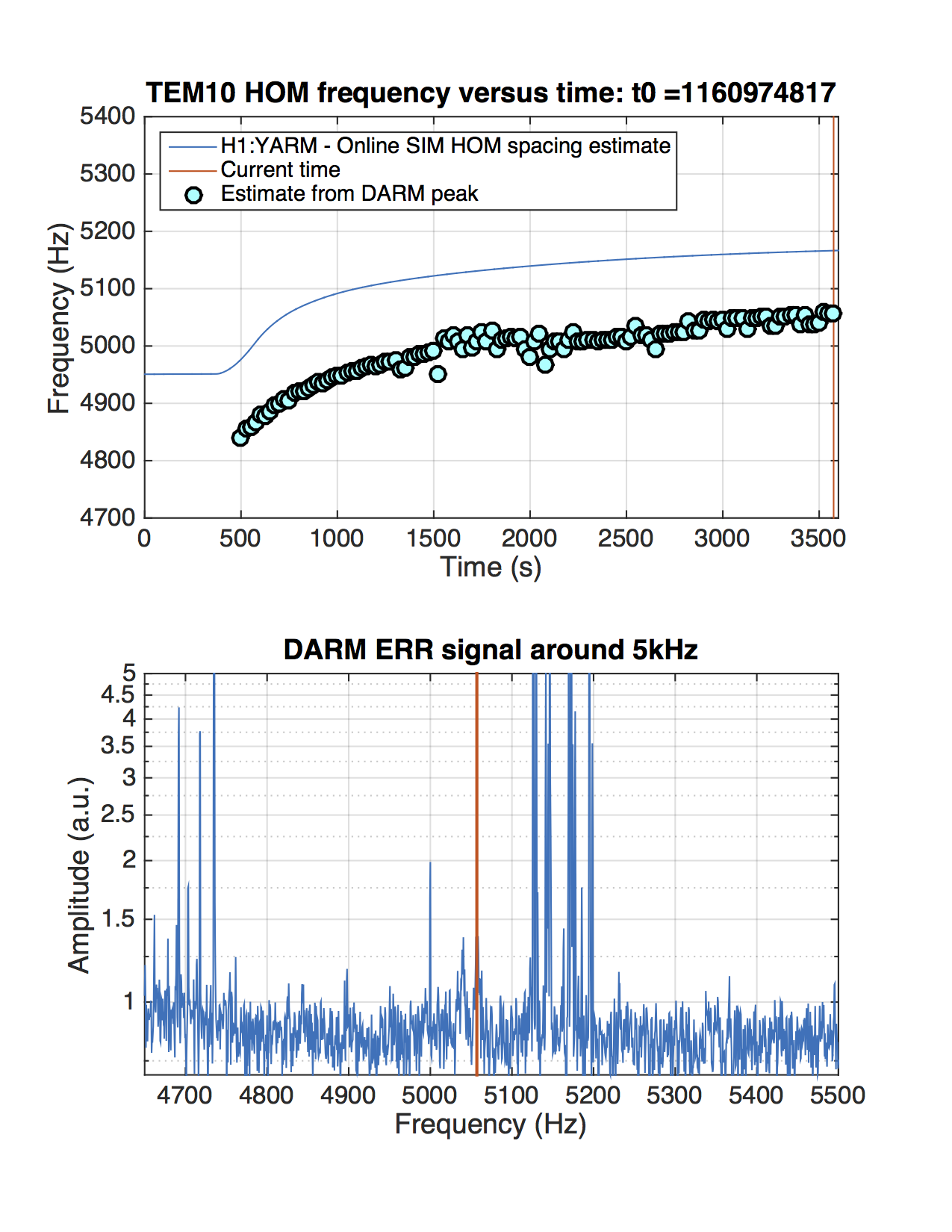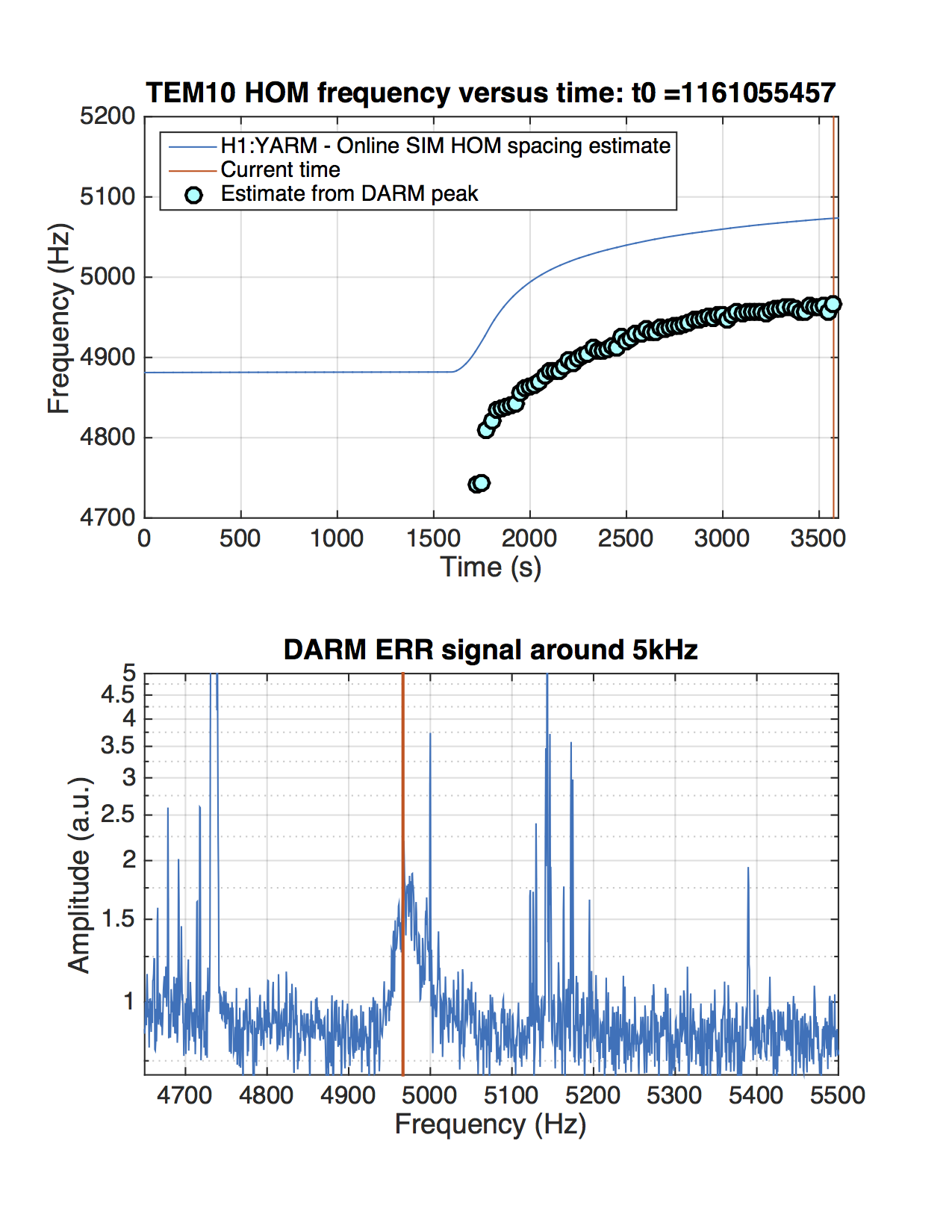Summary:
There is a broad peak in the DARM spectrum around 5kHz which is consistent with the TEM10 being rung up at that frequency.
- The transient behaviour is consistent with the simulated change in g-factor (and HOM spacing) of the cavity due to self-heating of the optics causing the ITM and ETM surface curvatures to change
- The observed peak in DARM shifted down in frequency after the ETMY ring heater values were changed (as expected).
Details:
The attached MATLAB file produces an animation that shows the DARM spectrum around 4700 - 5500 Hz. It updates this spectrum for 50s intervals around the time that the IFO is locked. Very quickly we see a broad peak (around 50Hz wide) form in DARM around 4900 Hz. This peak moves up in frequency as the lock is maintained.
I have the online simulation of the HOM spacing (frequency vs time) shown in the top plot. As the anmation steps forward in time, we can start to find the maxima of the broad peak in DARM. I've taken the location of these maxima and plotted them in the FREQ vs TIME plot (I've only picked the location of the maximum value of the broad peak and tried to exclude all times before the lock is acquired and the frequency starts to change). The transient behaviour is quite consistent with what the simulation predicts.
The two figures correspond to two recent locks but different ETMY ring heater settings:
- GPS TIME: 1160974817: ETMY RH = 0W
- GPS TIME: 1161055457: ETMY RH = 1.1W (aLOG 30685)
After the ETMY ring heater is turned on and stabilizes, we expect the HOM frequency to shift down by about 60Hz, according to the simulation. We see a commensurate change in the location of the peak in DARM.
If this is the TEM10 mode in the arm, then what is ringing it up?

Time 2:

More to come ...
(Download and run the MATLAB file to see the animation).
TEM10 mode overlaps with 47.5 kHz mechanical modes (see here) which we see aliased down around 18050 Hz. We have two PI in ETMY (47495 Hz and 47477 Hz) which ring up strongly during the beginning of the lock (through the first hour), which would of course ring up TEM10 in turn. 47495 Hz broke the second lock time you look at after about an hour. I'll run your matlab file over the weekend and compare to the amplitude behavior of these PI. (Also note that the ETMY ring heater change you mention was specifically to move into a zone where there's more overlap with these mechanical modes so that I could check our ESD damping capabilities.)



